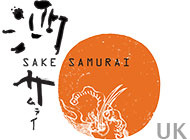Sake Q & A
Sake & alcohol volume: is sake very strong?
Sake is generally around 13-17% ABV, which makes it just a little stronger than most wine. The fact that it’s clear and tends to be served in small glasses can be misleading, however, with many assuming it to be as strong as clear spirits such as vodka or rum. In reality, the strongest sake—genshu, for example—is around 17-20%, which is the same strength as port. Indeed, under Japanese regulations, sake must be below 22%. The processes of natural fermentation make it unlikely that any resulting sake will be more than 20% ABV, and in many cases water is added at the end of the process to lower the alcohol content, bringing the average ABV down to 13-17%.
Why is sake drunk in a small cup?
It’s certainly the case that sake is often served in small cups, called o-choko. However, there is an argument that the fragrance and flavour of some sake can be best enjoyed in larger receptacles, such as wine glasses. Still, sometimes smaller cups will be better. Sake is an incredibly versatile drink: and the way that it is drunk can be adapted to the situation too.
Traditionally in Japan, small sake cups are used to encourage people to “serve” one another by pouring each other drinks; in the sense, sake is a tool by which friends can be made and communication enhanced. It has been noticed, however, that many modern sake, such as premium ginjo and sake of similar quality, are best showcased when drunk from a small wine glass. This allows the quality of the sake to shine through, and is more effective for highlighting aroma and palate complexity. As an indicator of this, renowned glassmaker Riedel has produced its own Daiginjo Tasting Glass, specially designed to complement the characteristics of premium sake.
Why is sake so expensive compared to wine?
The UK is a representative example of a country where wines from all over the world can be drunk at very reasonable prices. The average price of a bottle of wine is said to be around 5 pounds. Unfortunately, however, sake from Japan is currently unable to compete entirely on price alone. This is because of the import volumes; the benefits of mass import have yet to be felt and the necessary logistics are not yet fully in place. There is the additional factor of the exchange rate with Japanese yen. As sake becomes more popular, however, it should become possible to enjoy sake at a lower price.
It’s important not to forget that in addition to the logistics and the exchange rate, making sake is a traditional process requiring skill, labour, natural resources and time. Many sake are still produced by careful human hand, which is also reflected in the price.
